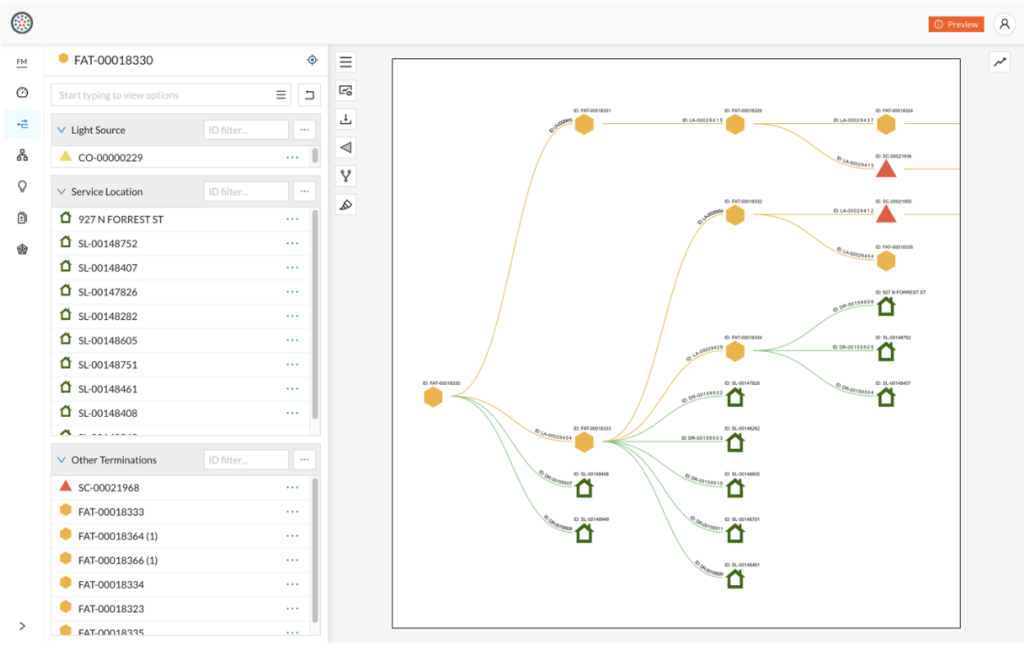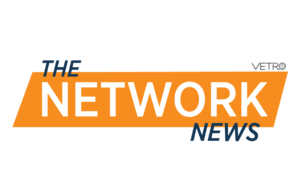In the ever-evolving landscape of ISPs, the efficient management of complex fiber optic networks remains a constant challenge. The introduction of Straight Line Diagrams (SLDs) emerges as a game-changer, revolutionizing the way network engineers and Network Operations Center (NOC) staff navigate and understand their networks.
SLDs were recently introduced as a new feature within VETRO FiberMap. Let’s explore how SLDs are transforming the way VETRO customers approach fiber network management and the economic benefits they bring.

Understanding Straight Line Diagrams
Modern SLDs represent a recent innovation in the realm of fiber optic network management. Offering a simplified, topological view of network elements, SLDs complement traditional network maps, providing a fresh perspective on complex fiber networks.
So what are some of the key features of SLDs in VETRO?
Linear Topological View: SLDs present a streamlined, sequential overview of network elements, simplifying the visualization of intricate fiber paths.
Upstream & Downstream Visibility: Users can select any network element and view all connected elements in either direction, empowering you to grasp the interconnected nature of the network.
Controlled Complexity: SLDs allow users to control the complexity of their view, providing a clearer understanding of specific network segments without unnecessary details.
Visual Consistency: Maintaining visual consistency ensures a seamless transition between geospatial and SLD views, facilitating a holistic understanding of the network.
Export Capability: SLDs support visualization for large networks and can be exported to PDF, offering a convenient way to share insights and collaborate.
Highlighting Redundancy and Diversity: SLDs play a crucial role in highlighting network redundancy and diversity, particularly beneficial in complex network scenarios.
Economic Benefits of SLDs
Using SLDs to visualize your network improves operations in a number of ways. VETRO customers can expect to quickly experience many of the following benefits:
Enhanced Decision Making:
SLDs provide a clear and concise view of network relationships and capacities. This aids in strategic decision-making for network upgrades and expansions.
Reduced Downtime:
By creating a simplified visual of how the network fits together, users are able to quickly detect faults and speed up repair efforts. This contributes to minimizing network downtime, reducing associated costs.
Improved Efficiency:
SLDs simplify the understanding and management of complex fiber optic networks, significantly reducing the time spent on network troubleshooting, maintenance, and planning tasks.
Better Training and Onboarding:
SLDs serve as an effective tool for training new technicians and engineers. By simplifying visualization of the network, new hires can quickly see how the pieces fit together, and build their understanding of the structure of the network.
Streamlined Reporting:
Many of our customers choose to export SLDs to PDF for streamlined reporting. By giving stakeholders a simple PDF that shows them exactly what they need to see, users save time and resources that would otherwise be spent on manually creating reports.
Real-world Impact:
“The introduction of Straight Line Diagrams improves our ability to explain and manage our network,” says a VETRO customer from a large ISP. “Traditional maps can be confusing when trying to understand the network’s interconnected nature. This new tool makes it easier to explain to external groups how different parts of the network are connected. In practical terms, it’s particularly useful in our Network Operations Center. For them, the physical location is secondary to understanding what’s happening upstream in the network. The Straight Line Diagrams provide a clearer, more straightforward visualization, resembling a flow chart, which is extremely helpful. This feature will make diagnosing network issues more efficient and accurate.”
Straight Line Diagrams are emerging as a transformative tool for ISPs, network operators, and engineers, providing a fresh perspective on the complex world of fiber optic networks. As the industry embraces the power of SLDs, networks are not just managed but optimized for efficiency and reliability.
About VETRO
VETRO builds software that makes it radically simpler and faster for broadband providers to plan, design, build, and operate their fiber optic networks. VETRO is the only SaaS-based GIS fiber management platform that optimizes the business value of networks by simplifying the digitization, data visualization and management of fiber assets through an open, highly accessible and precise system of record for network assets. Our map-based SaaS platform is easier to use and more powerful than traditional tools and enables network operators and ISPs to benefit from a modern, integrated, and connected digital hub for their physical network assets.




